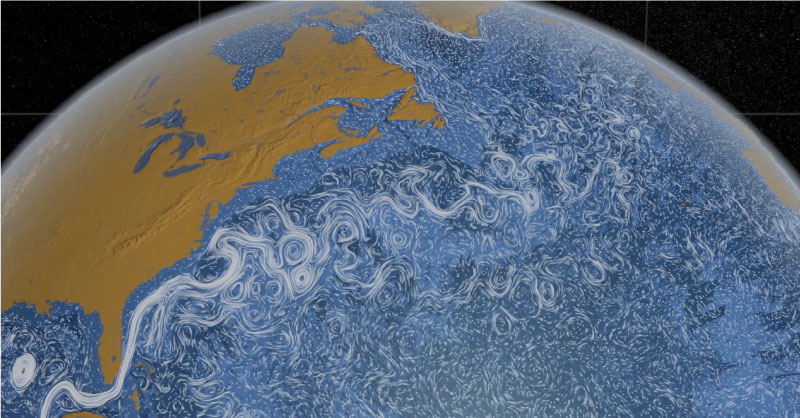Sea surface salinity (SSS) plays a key role in ocean circulation and the regulation of Earth's climate.
Deciphering the dominant processes that affect SSS - evaporation and precipitation - will improve our ability to
monitor, understand, and model those factors that ultimately govern ocean motion and climate variation.
Featured Video: Why SPURS?
Dr. Raymond Schmitt gives a brief summary of why the SPURS cruise is happening
(view transcript).
Resources
- An Oceanographer and the Water Cycle
[NASA Earth Observatory]
If one wants to find out what the water cycle is doing, one should be looking at the oceans
- Classroom Activities
[NASA Aquarius]
"Hands on" laboratory activities for Grades K-12
- The Water Cycle - Now You See It, Now You Don't
[NASA Salinity]
This activity focuses on two aspects of the water cycle: evaporation and condensation
- Sea Surface Salinity and Ocean Circulation
[CLIMB]
The effects of sea surface salinity on ocean circulation are illustrated in this interactive concept map from COSEE-Ocean Systems
- The Role of Salt
[NASA Salinity]
How much salt is there? Where does it come from? Is salinity uniform throughout the ocean? Answers to these questions and more
- Student Outcomes
[NASA Aquarius]
Twenty three student outcomes addressed by Aquarius EPO materials and aligned with National Science Education Standards
- The Power of Sea Salt
[YouTube]
A ScienceCast movie from Science at NASA
- Ocean Circulation and Climate
[NASA Salinity]
Ocean salinity's influence on the environment can be summarized by looking at Earth's three major latitude zones: high latitudes, mid-latitudes, and the tropics
